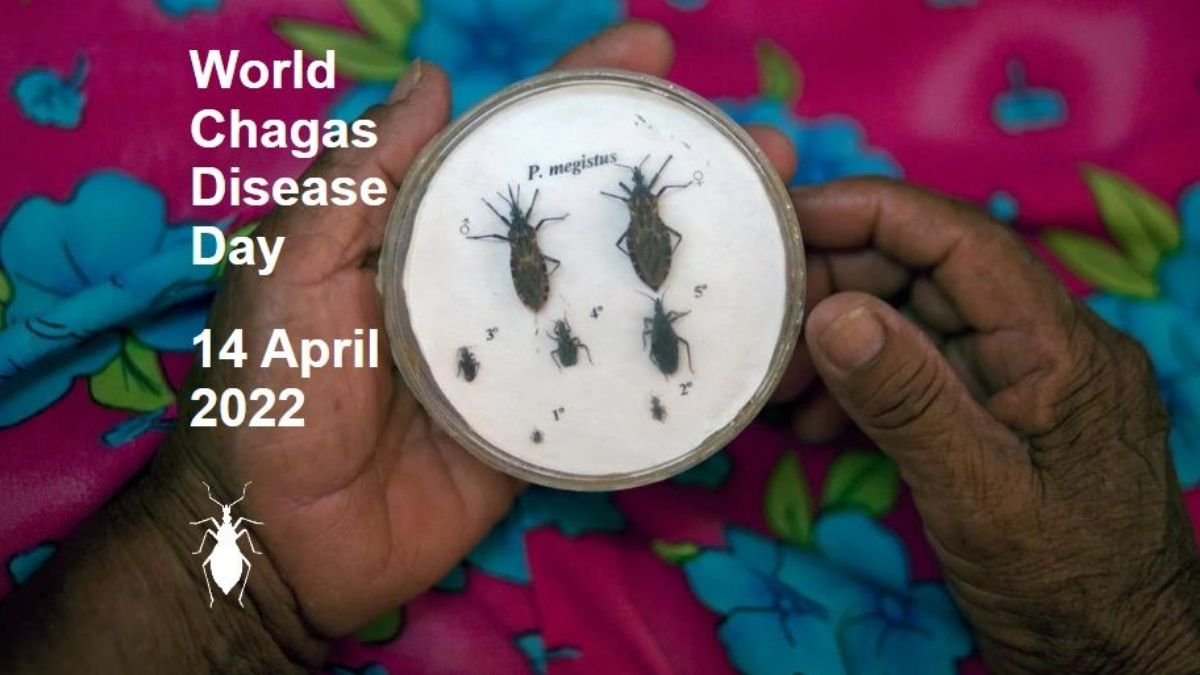Today is World Chagas Disease Awareness Day. The theme for this year is “Finding and reporting every case to defeat Chagas disease.”
Despite progress, the global case detection rate for Chagas disease is low (estimated at around 10%), posing a significant barrier to accessing treatment and care as well as preventing transmission.
Many people with Trypanosoma cruzi infection (the parasite that causes the disease) develop no symptoms or unspecific mild symptoms, making it a “silent and silenced disease.” Furthermore, many countries with cases lack systems for tracking the number of people affected and active transmission routes.
According to the World Health Organization (WHO), an estimated 6–7 million people worldwide are infected with T. cruzi, with approximately 10,000 deaths occurring each year.
Dr Tedros Adhanom Ghebreyesus, Director-General of WHO, reaffirmed WHO’s commitment to working with countries to defeat the disease in his message commemorating World Chagas Disease Day 2022.

“To defeat Chagas disease, WHO is committed to working side by side with all affected countries to improve their ability to prevent, detect, report, and treat every single case.”
Chagas disease continues to be a public health issue, particularly in several endemic areas of continental Latin America, where the burden on health systems is significant. When treated promptly after infection, the disease is curable.
“It is critical to report each acute and chronic case in order to break the epidemiological silence of Chagas disease,” said Dr Pedro Albajar Vias, WHO’s global Chagas disease programme leader. “By raising awareness, we can overcome the stigma and neglect associated with this disease.”
Chagas disease has been detected in several countries outside of Latin America over the last few decades, including the United States of America and Canada, as well as many European and some African, Eastern Mediterranean, and Western Pacific countries.
Chagas disease, if left undiagnosed and untreated in its chronic phase, can cause arrhythmias and dilated cardiomyopathy, leading to sudden death or heart failure, as well as digestive clinical manifestations, thrombotic vascular accidents, and neurological sequela.
The Seventy-second World Health Assembly decided in 2019 to establish World Chagas Disease Day on 14 April to raise public awareness about the disease.
The road map for neglected tropical diseases 2021–2030 identifies five main objectives for achieving the Chagas disease elimination targets by 2030:
verification of vectorial domiciliary transmission interruption; verification of transmission interruption by blood transfusion; verification of transmission interruption by organ transplantation; elimination of the congenital form of the disease and coverage of antiparasitic treatment for the eligible population of 75%.
Faster data exchange and monitoring allow for the sharing of up-to-date information, the monitoring of progress, and the verification of accomplishments. Better diagnostic tools and protocols can help to detect patients more quickly.
To achieve the goal of eliminating T. cruzi transmission and providing health care for infected people or those suffering from the disease in both endemic and non-endemic areas, global networking and regional and national capacities must be strengthened.
Chagas disease, also known as American trypanosomiasis, is a potentially fatal infection caused by the protozoan parasite T. cruzi.
T. cruzi parasites are primarily transmitted in Latin America through contact with the feces/urine of infected blood-sucking triatomine bugs (vectorial transmission). These bugs typically live in the wall or roof cracks of rural or suburban homes and peridomiciliary structures such as chicken coops, pens, and warehouses. They normally hide during the day and come out at night to feed on animal blood, including human blood. The triatomine bug typically bites an exposed area of skin, such as the face (hence the nickname “kissing bug”), and then defecates or urinates close to the bite. When a person instinctively smears the bug’s faeces or urine into a bite, other skin breaks, the eyes, or the mouth, the parasites enter the body. Oral transmission via contaminated food, in addition to vectorial transmission, is a potential mode of transmission.








































